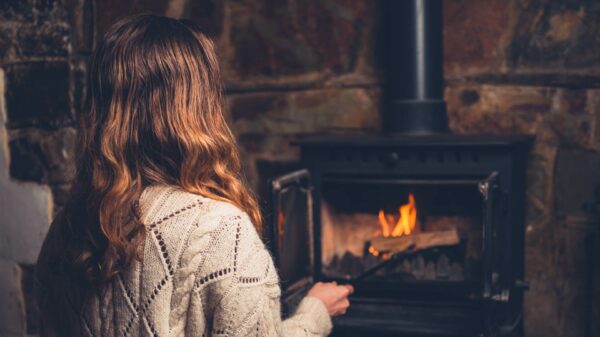Carbon monoxide, also known as “CO”, is a gas that can be lethal to humans. Because of its invisible, colorless and odorless properties, it is often called the “silent killer”. Carbon monoxide is a pollutant not to be overlooked: it’s important to understand its toxic effects on human health.

A quick reminder about this gas
Today, we spend most of our time in closed environments. We are often confronted with appliances that emit carbon monoxide. They can release this toxic gas, which is fatal to humans and pets alike. Once inhaled, it attacks the body by replacing oxygen with the molecule carboxyhaemoglobin.
Every year, CO is responsible for over a hundred deaths in France. In addition, there are around 1,300 episodes of carbon monoxide poisoning per accident, involving almost 3,000 people a year.
Carbon monoxide is measured in parts per million (PPM) ranging from 200 ppm to +1600 ppm. Depending on the threshold reached, the person experiences various symptoms. Note that the higher the threshold, the greater the danger to health.
Effects on the body
Carbon monoxide poisoning can have serious or fatal consequences, but it is often difficult to detect due to the absence of visual or olfactory signals. However, there are a few telltale symptoms when it comes to this gas. It’s crucial to recognize these warning signs so that you can take action as quickly as possible to protect yourself and those around you in your home.
Staying alert to these signals can save lives and enable rapid medical intervention in the event of carbon monoxide exposure. As mentioned above, the higher the thresholds, the greater the risk. For example, above 200 ppm, humans can experience headaches, fatigue or the urge to vomit. Above 1600 ppm, a person can die.
In a confined environment, this gas develops rapidly. In the air, from :
- 0.1% CO kills within 1 hour;
- 1% carbon monoxide kills in 15 minutes;
- 10% CO, it kills immediately.
Two types of poisoning
- Chronic” intoxication, which manifests itself as nausea, headaches or mental confusion;
- Acute intoxication causes dizziness, muscular impotence, loss of consciousness, coma or death.
Chronic poisoning can be detected by family doctors, paramedics or social workers who make home visits. These are sometimes equipped with specialized detectors. If a group of people suffer even mild CO inhalation, they are taken to hospital to speed up elimination of the gas from the body.
Occupants who have inhaled abnormal amounts of carbon monoxide (carbon monoxide poisoning) require oxygen therapy. The latter is treated with an oxygen mask. In the most severe cases, 90-minute sessions in a hyperbaric chamber (a decompression chamber that increases tissue oxygenation) are unavoidable.
By the time emergency services arrive, victims of severe poisoning may be suffering from a variety of symptoms:
- Chronic migraines ;
- Coordination disorders ;
- Paralysis of all kinds.
In the event of suspected poisoning, take the following steps:
- Ventilate immediately;
- If possible, switch off gas-emitting appliances;
- Evacuate the premises;
- Call emergency services on 18, 15 or 112 (114 for the hearing impaired).
Limiting exposure in the home
Carbon monoxide can be prevented. Here are a few tips to avoid the risk of propagation:
Before winter :
- Check installations such as boilers, water heaters, fireplaces, stoves, etc. by an approved professional;
- Sweep flues and chimneys at least once a year.
During winter :
- Air your home for at least 10 minutes a day;
- Avoid blocking air inlets.
In periods of extreme cold :
- Never use heating appliances not intended for this purpose, such as braziers, stoves, etc. ;
- Do not run auxiliary heaters continuously, but intermittently;
- Install generators outside buildings.
Throughout the year, check and maintain the :
- Wood-, coal-, oil- or gas-fired heating equipment ;
- Individual boilers ;
- Gasoline-powered tools or appliances ;
- Outdoor equipment such as barbecues, stoves, etc. ;
- Gas appliances such as oven, stove, etc. ;
- Vehicles or tools with internal combustion engines in garages.
It’s important to check, repair and maintain all these appliances to limit the risk of carbon monoxide emissions.
Detecting carbon monoxide
CO can be generated in a number of ways in an indoor space. Understanding and detecting where the gas is coming from is important. One of the most frequent sources is the use of combustion heating systems, motor vehicles or other gas-generating equipment.
To protect yourself and those around you, there is a gas detector available. The carbon monoxide detector, also known as a DAACO, is a warning device. This device is capable of preventing carbon monoxide poisoning. It alerts occupants of a confined space when it detects CO. Purchasing a DAACO allows you to take corrective measures to improve air quality and reduce the risk of poisoning.
The installation of a carbon monoxide detector is not mandatory in France, but is nevertheless recommended. There are different detectors on the market to suit different needs. At Nexelec, we offer a wide range of detectors:
- With 10-year battery;
- With 10-year battery and NFC chip;
- Connected with a long-life battery;
- Connected temperature and humidity meter with 10-year battery life.
Our devices measure CO levels in enclosed spaces in real time. It makes it easier to identify faulty equipment, so that it can be repaired or replaced.
Carbon monoxide is a colorless, odorless gas invisible to the naked eye. This toxic gas is one of the deadliest pollutants in existence. It is formed during the incomplete combustion of organic matter (gas, coal, fuel oil, wood or fuel). An individual who has been exposed to too much is in danger. It’s essential to detect it with a special device, such as an autonomous carbon monoxide detector.